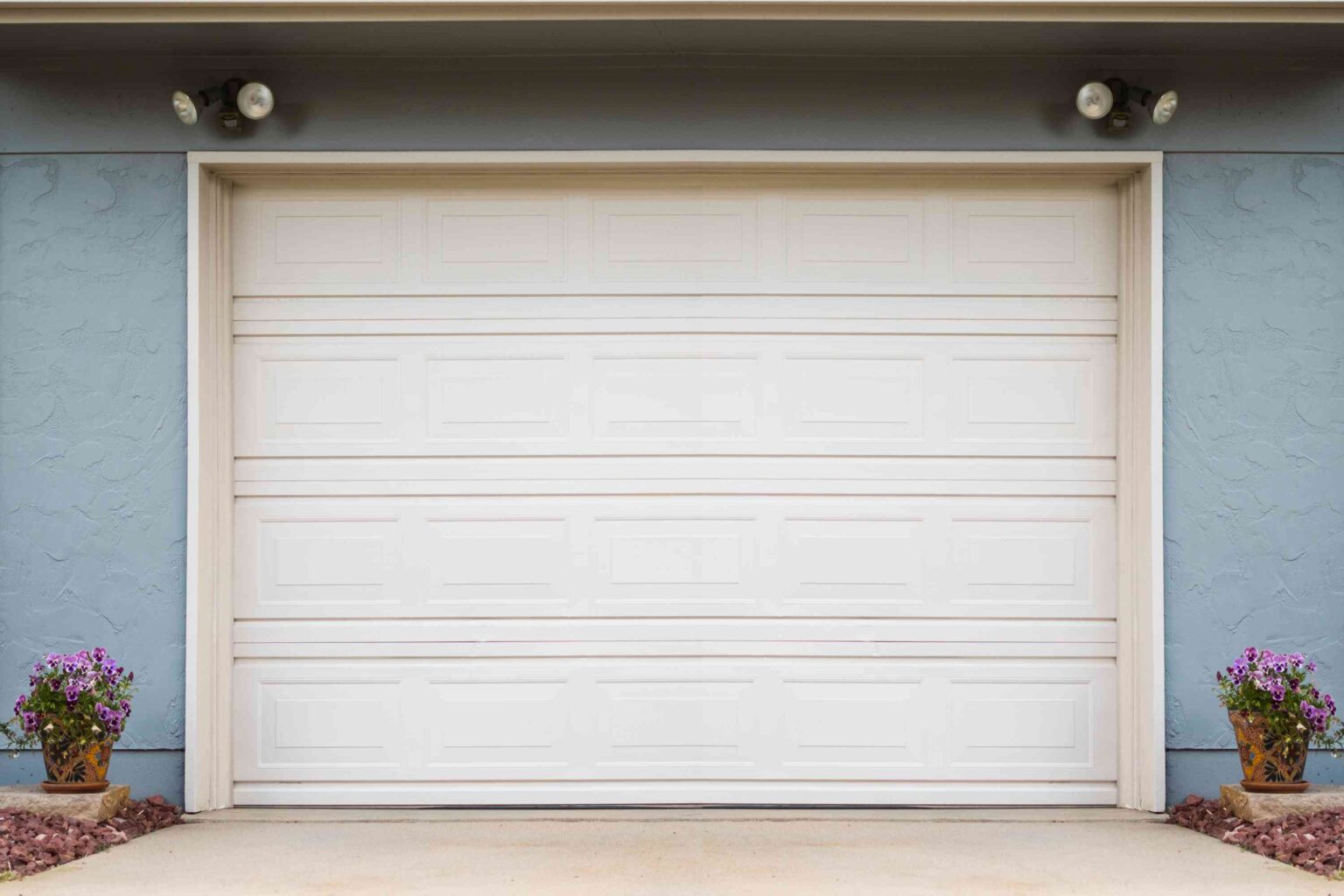Act as an expert content writer specialized in Interior Walls and Ceilings design, who speaks and writes fluently in French. Translate the article below into French. Continue writing until you finish translating the entire content from beginning to the end. Make sure the translation is linguistically accurate, and conveying the meaning, facts and figures of the original text. Make sure the content generated is well written and does not sound like a translation and reflects an awareness of the culture of French people. Don’t talk about Yourself or Your Experience. Don’t Self-reference. Don’t explain what you are doing. Write the content in HTML format and Keep the images and the structure of the article as they originally are. The article to translate:
If you’ve noticed water, dirt, or animal droppings in your garage, there’s a good chance the problem can be traced back to your garage door. While all garage doors come with a bottom seal to keep out water, wind, dirt, and unwanted intruders, the seals themselves can break down over time, so it’s important to add weather stripping to the base.
Weather-sealing a garage door usually involves a simple process of adding or replacing the bottom door seal and the weatherstripping on the stop molding along the sides and top of the door. It may also include adding thin weatherstripping between the door panels if you want to make the door as airtight as possible.
Importance of Weather-Sealing Your Garage
It’s important to weather-seal your garage to protect your home from damaging elements like rain, snow, hail, and wind. If water enters your garage during the winter, it could freeze to create ice and water damage that will ruin your floor and potentially seep into your living spaces. Water in your garage during warmer, humid weather, can also attract bugs.
If your garage door is working well, then weather-sealing can be mostly a DIY job. Sometimes, the garage door needs a gasket replacement, adjustment, or other type of repair. Because it’s vital that your garage door works and seals properly, you may want a professional garage door installation company to handle the job. Keep reading for several ways to weather-seal your garage door, and, why it’s important to do so.
-
01
of 06Use a Garage Door Bottom Seal
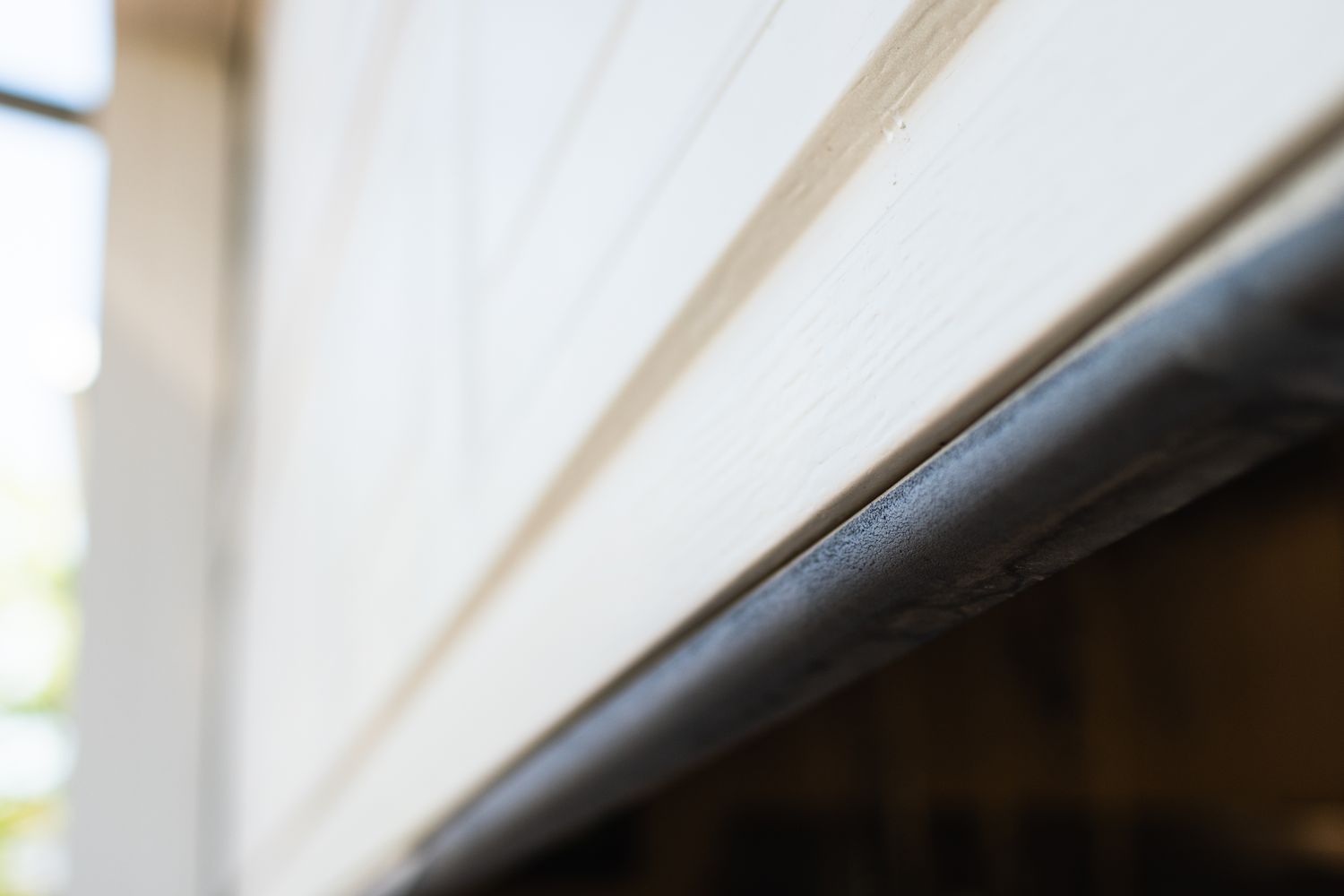
The Spruce / Meg MacDonald
The garage door bottom seal (or door sweep) is a long strip of rubber or vinyl that attaches to the bottom edge of the garage door. The flexible material compresses when the door closes, sealing the gap along the floor to keep out water, dirt, cold breezes, and critters. You’ll know it’s time to replace the bottom seal when you can see daylight below the bottom of the door when it is closed. You might also feel a draft or see water if the outside of the door gets wet.
Wood garage doors typically use a simple strip-style seal with angled edges that seal against the front of the door and the floor. Generally, these are installed with galvanized or aluminum roofing nails.
Metal garage doors usually have an aluminum channel on the bottom of the door that holds a U-shaped rubber gasket, sometimes called a T-style or astragal seal. The gasket simply slides into two small tracks on the channel for installation. You can also install a metal gasket channel onto a wood garage door so you can use this type of gasket.
In addition to their easy installation, the best thing about U-shaped gaskets is that they come in different sizes to seal gaps of various heights. This can be an easy solution for large gaps created by sunken or cracked garage floors.
-
02
of 06Try a Garage Door Threshold Seal
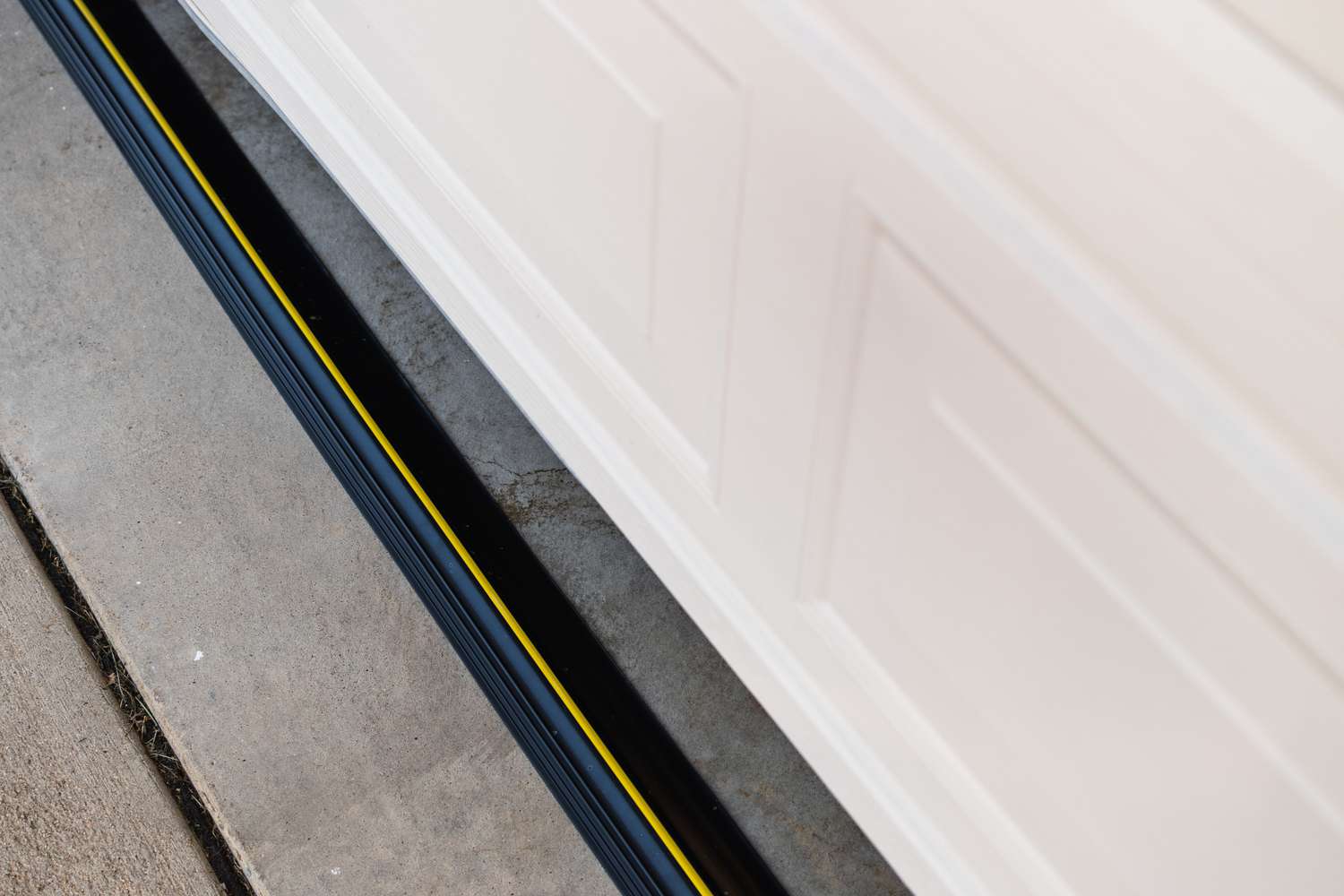
The Spruce / Meg MacDonald
A threshold seal serves a similar function to the bottom seal on a garage door, but it is attached to the garage floor rather than the door. Thresholds can be used alone or in conjunction with a door seal. Thresholds often are used to keep out surface water when a driveway slopes down toward a garage. They can also help fill a large gap below a door.
A good-quality vinyl threshold seal can be more durable than a door seal. It is installed with an adhesive that is usually included with the threshold.
Keep in mind that thresholds block water going out of a garage, just as they keep it from flowing in. This can be inconvenient if you like to hose out your garage. A threshold also makes it difficult to sweep dirt and debris out of the garage.
-
03
of 06Add Garage Doorstop Weatherstripping
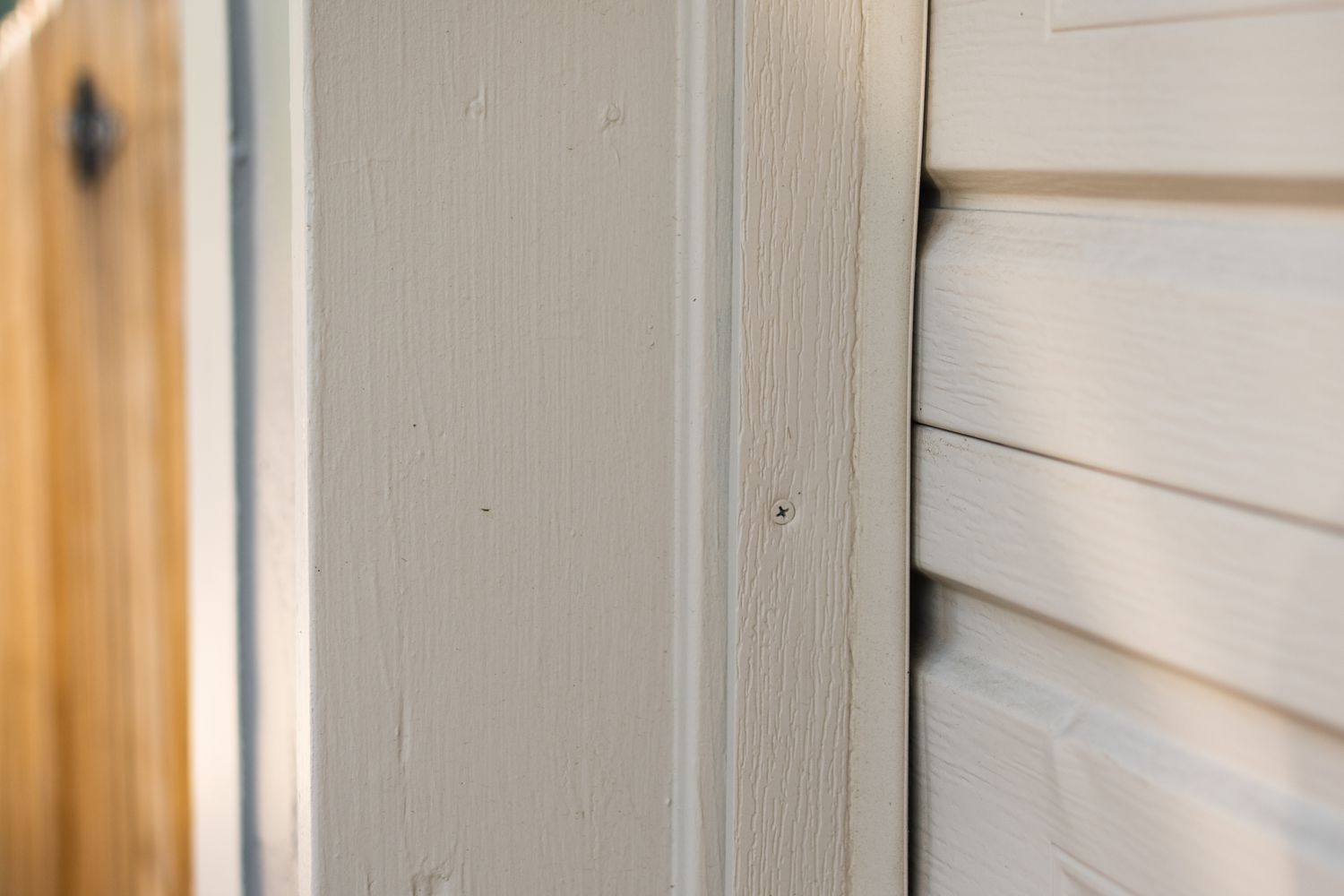
The Spruce / Meg MacDonald
Wind and rain can also get into the garage around the sides and top of the garage door. To prevent this, garage doors usually have rubber or vinyl weatherstripping installed onto the wood doorstop molding that is attached to the door jamb and nearly touches the front face of the door.
Install new weatherstripping onto your doorstops if your garage door doesn’t have it or if it has old, worn stripping that no longer seals against the door. New weatherstripping comes in rolls, and you can easily cut it to length with a utility knife. It installs with galvanized nails or screws. The door-side flange of the weatherstripping should press against the door to create a good seal.
-
04
of 06Try a Vinyl Doorstop With Integrated Weatherstrip
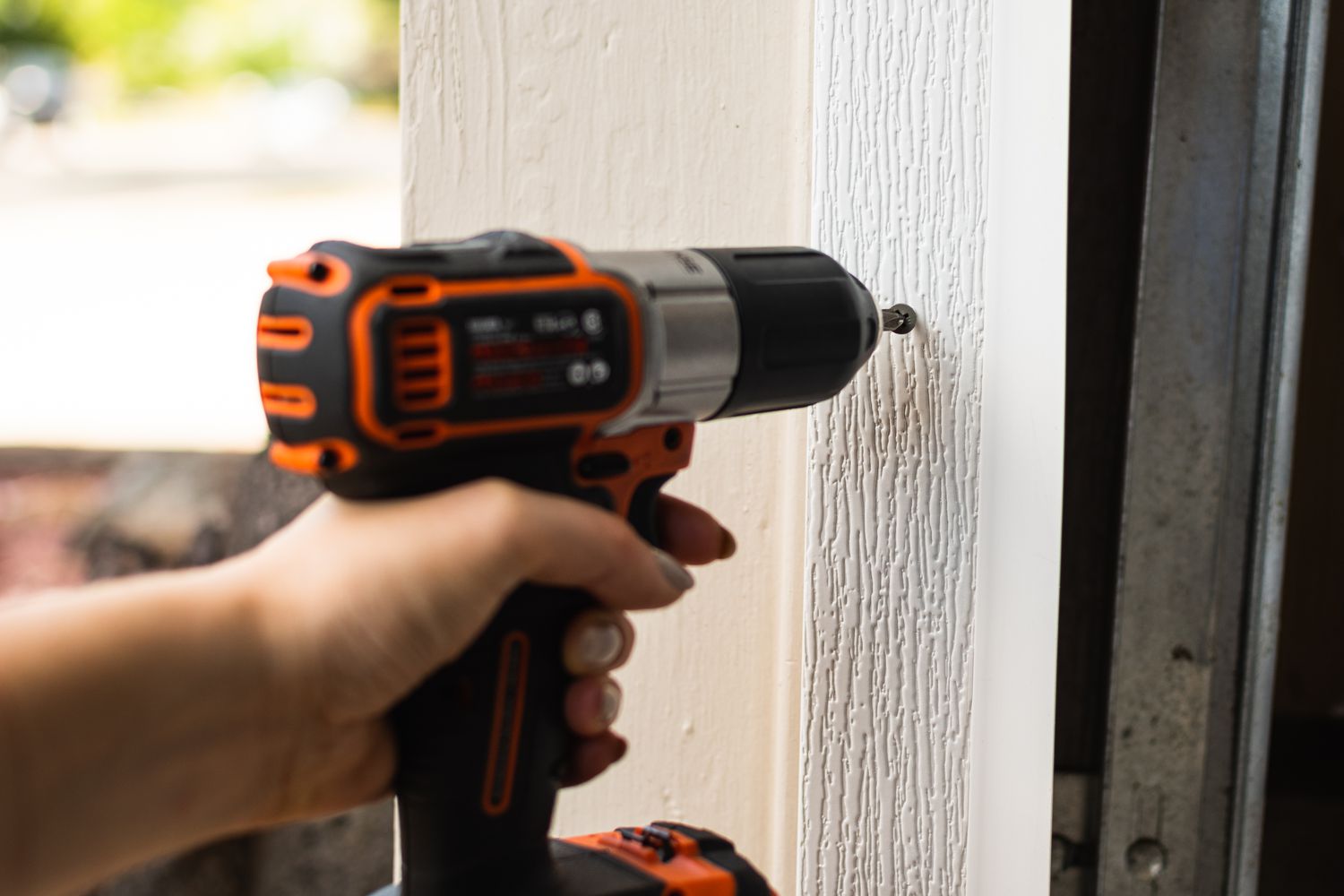
The Spruce / Meg MacDonald
Door stop molding with weatherstripping is a great option for doors that have old, rotted, or damaged door stops that need replacing. This specialty stop molding typically is made of vinyl and has a wood-look molding strip and a flexible weather-seal flange all in one piece. It cuts easily with a saw and installs with galvanized or stainless steel siding nails.
To install the door stop, position each piece parallel to the door face and push the molding toward the door so the weatherstrip flange is slightly compressed against the door, and then fasten the molding to the door jamb with nails. Typically, it’s best to install the top molding first and then overlap the ends of the top molding with the side stops.
-
05
of 06Use Garage Door Panel Weatherstripping
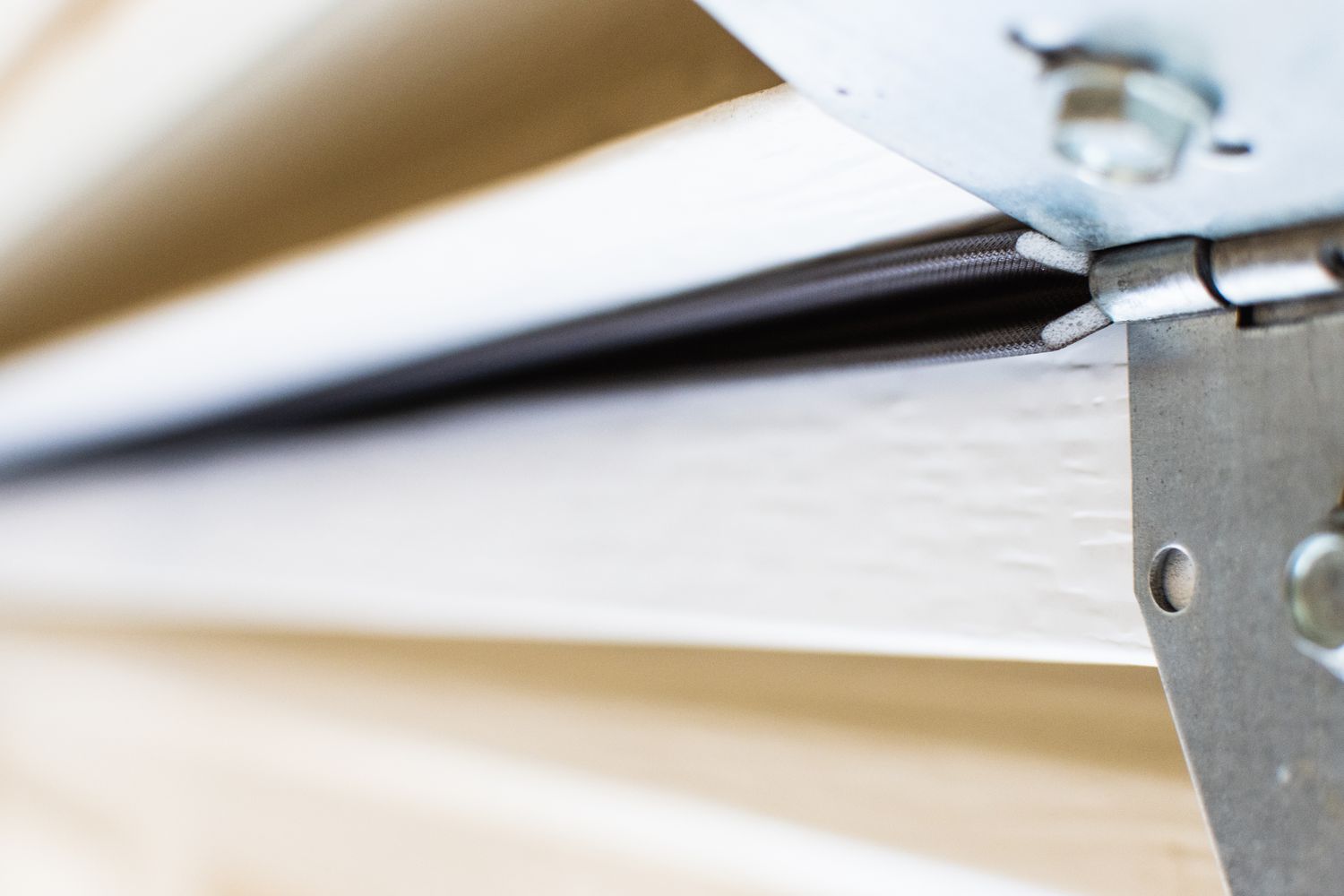
The Spruce / Meg MacDonald
V-shaped garage door panel weatherstripping is designed to seal the gaps between individual door panels. This can be particularly helpful on older wood doors with panels that have flat edges. (Newer metal and fiberglass doors usually have interlocking edges to prevent air intrusion.)
Door panel weatherstripping is sold in rolls and is self-adhesive. You simply stick it to the top or bottom edge of each panel. When the door is closed, the panels compress the weatherstripping to create an effective seal, much like weatherstripping on standard house entry doors.
-
06
of 06Opt for a Brush Seal
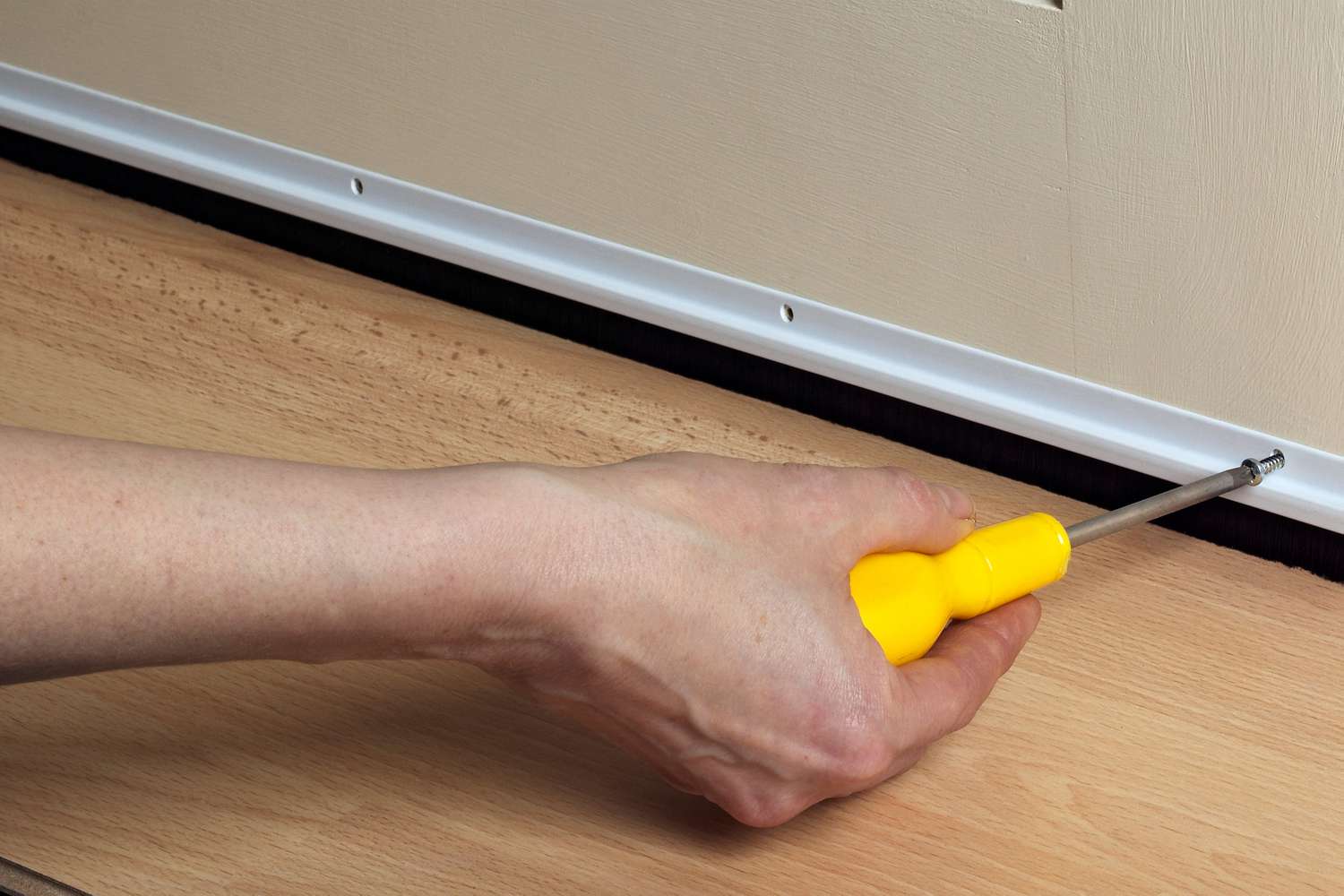
Gary Ombler / Getty Images
Although not as durable as rubber seals, brush seals use flexible brush bristles at the bottom of the garage instead of rubber. The brush seal sits along the top of the door frame and covers the gap between the door and the garage. However, brush seals aren’t a solid barrier, so some debris and bugs may still come in this way.
When measuring for installation, the brush seal’s bottom should just touch the floor, so you will need to cut a few inches. Next, you’ll need to press adhesive tape to the track. Overlap the second piece of seal slightly over the first piece. This will help to close any gaps between the two pieces.




